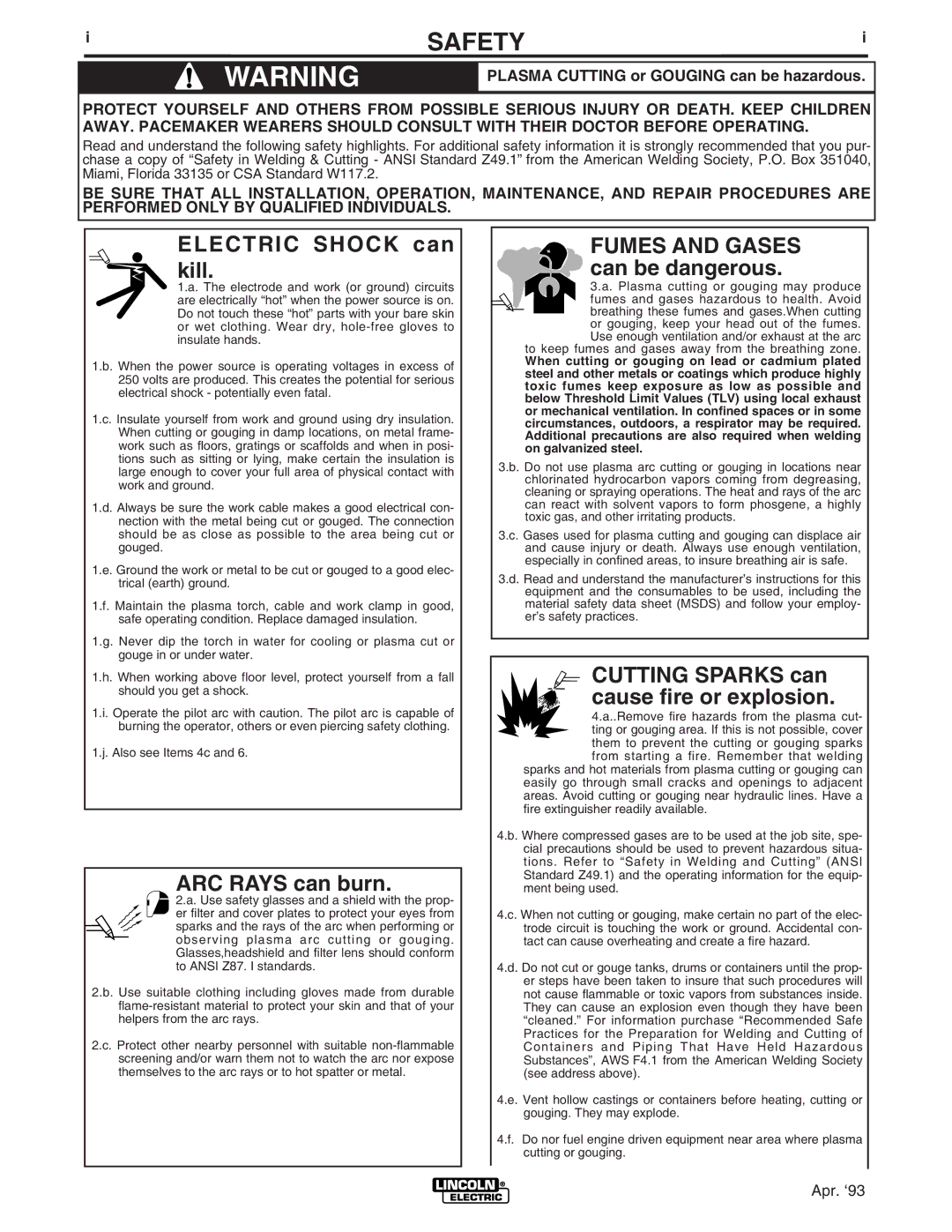10476, 10474, 10473, 10475 specifications
Lincoln Electric is renowned for its commitment to quality in arc welding equipment, and its models 10475, 10473, 10474, and 10476 are no exceptions. These products showcase advanced technologies designed to enhance user experience and improve weld quality across various applications.The Lincoln Electric 10475 is a premier choice for professionals seeking exceptional portability and efficiency in stick welding. This model features a lightweight design that makes it easily transportable, ideal for fieldwork. It boasts a robust output range, allowing it to handle various electrode sizes, making it versatile for different metal types. The 10475 also incorporates a built-in electronic device that reduces the chance of arc blow, ensuring a stable arc when welding in challenging environments.
The 10473 model stands out for its innovative inverter technology, which significantly enhances energy efficiency. This unit reduces power consumption without sacrificing performance, making it an environmentally conscious choice for industrial applications. It features an intuitive interface, allowing users to adjust settings easily and quickly. The 10473 is designed to support TIG and stick welding with smooth arc control, promoting consistent welds and minimal spatter.
Model 10474 continues the trend of advanced technology with its synergic control feature, which automatically adjusts welding parameters based on the material and thickness. This functionality takes the guesswork out of settings, making it user-friendly for both beginners and seasoned welders. Additionally, the 10474 is equipped with a fan-on-demand system, reducing noise and improving energy efficiency while ensuring optimal cooling during extensive use.
Lastly, the 10476 model excels in dual function capabilities, providing users with the option for both MIG and flux-cored welding. This flexibility expands the range of applications, from thin sheet metal to thick structures. The 10476 also integrates a high duty cycle, making it suitable for continuous operation on demanding projects. Features such as advanced digital displays support precise control over voltage and wire feed speed, ensuring high-quality results.
Together, these Lincoln Electric models reflect the company's dedication to innovation and excellence in welding technologies. Their unique features cater to a wide array of welding needs, making them essential tools for professionals across various industries. Whether for portability, efficiency, user-friendliness, or versatility, Lincoln Electric continues to set the standard in welding equipment.

